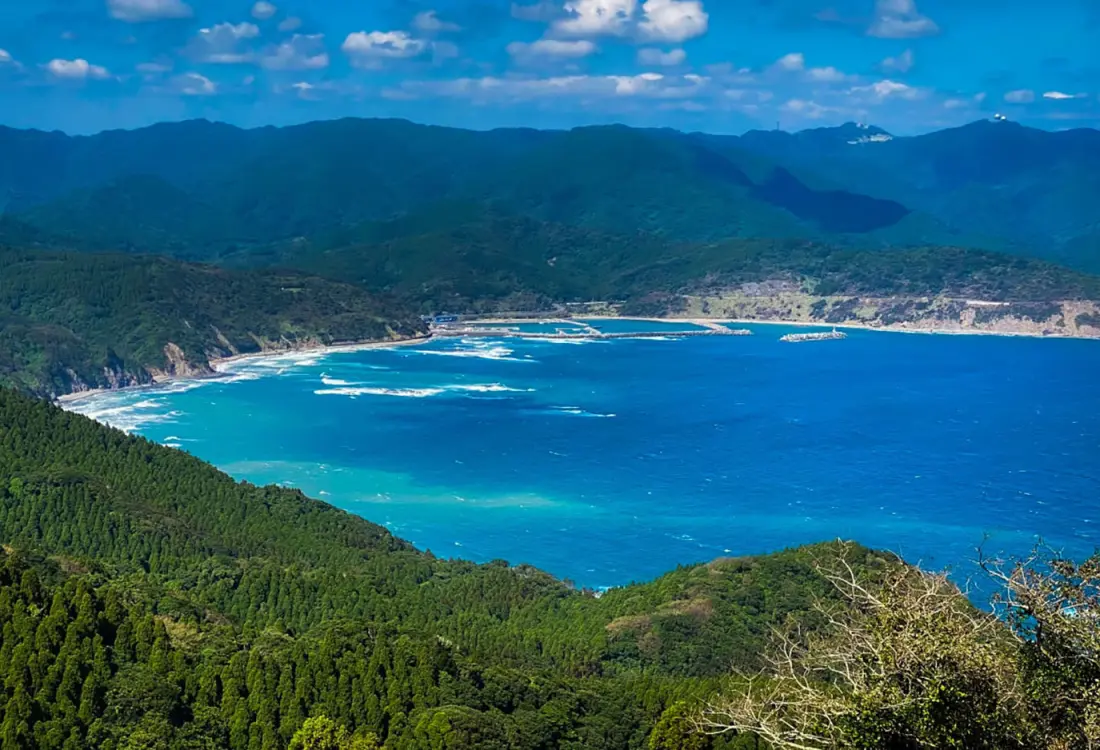
Cape Toi in Miyazaki
A Festival of Colors
Kyushu is home to a stunning array of natural features, and like every traveler, I have my secret list of favorite spots that only rarely go challenged. So I was taken completely off guard when I visited Cape Toi, and found myself standing atop a hill gazing upon what was easily one of the most exquisite scenes of my life.
Cape Toi is situated at the southernmost tip of the Miyazaki seacoast. The rich chromatic vistas from the cape’s promontory invoked what I imagined it might feel like to stand inside a painter’s palette: soft white cottony clouds; tranquil rolling hills in the deepest shades of green; and an entire spectrum of blues, from the vibrant turquoise of the ocean to the striking azure backdrop of the sky.
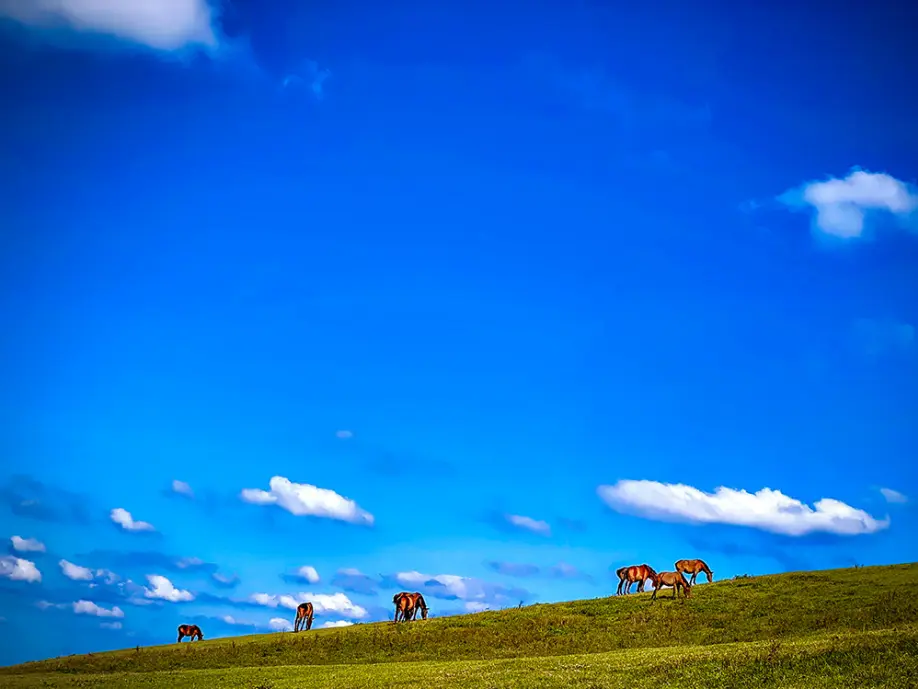
Adding into this mix the intense caramel brown of wild horses, munching placidly on pampas grass in the center of it all, it felt like a dream world.
Yet this was indeed real, and the backstory is even more fascinating. The cape is the grazing site for Misaki-uma, an indigenous breed of wild horses that is now an endangered species. A family from the Takanabe Domain, which ruled the area during the Edo period, collected the feral horses and established a ranch in 1697 to use the animals for both farm and military work. The horses were brought to Cape Toi following World War II, and continue to roam freely on local roads and atop the hillside today.

Misaki-uma and their natural surroundings have been designated as a nationally-protected natural monument, and are cared for by members of a local association. Although the creatures are generally docile, we were mindful not to touch them or approach them from behind.
We next visited the Cape Toi lighthouse, an atmospheric structure surrounded by a thicket of Japanese sago palm trees. This is only one of a few lighthouses in the country, and the only one in Kyushu, that welcomes you to climb up and explore inside. From the top you’ll find more expansive views of the Hyuga-nada Sea below, accompanied by exhibitions about the area’s history.

If you wish to combine your visit with a proper hike, there are several walking trails twisting through the forested region of the cape. Fortify yourself first with a take-out snack from Pakalapaka, a shop and cafe located at the foot of the hill--or enjoy one of its pasta or rice dishes afterward for lunch out on its attractive wooden deck.

While the weather at Cape Toi was perfect, our visit to Kojima Island was in fact thwarted when the outgoing ferry was canceled due to strong winds. This was unfortunate, as we had hoped to see the island’s only inhabitants: around 100 wild Japanese macaques, which are known as bunka-zaru (cultured monkeys), and are a designated national natural monument.

Primatologists at Kyoto University began researching the red-faced creatures in 1948, and went on to establish a branch of the university’s Primate Research Institute on Kojima Island in 1968. The researchers assigned individual names to the macaques, whom they observed scampering around the beach, grooming one another, and speaking together in hoots and grunts. They found that some of the primates’ more intriguing behaviors included eating fish straight out of the sea, and washing sweet potatoes in the river before dipping them in the salty ocean water for seasoning.
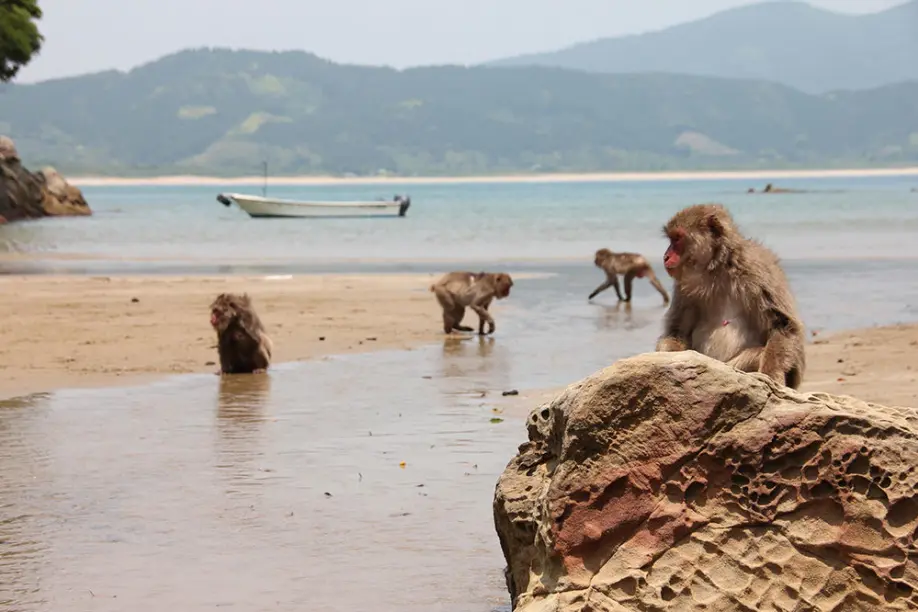
We agreed to return to catch a glimpse of these monkeys on Kojima Island someday in the near future. If we visited in late summer, we realized, not only could we also fully immerse ourselves in Miyazaki’s famous beach culture; but we might be able to time our visit to coincide with the Cape Toi fire festival.

The festival, a ceremonial event that’s based on a historical legend where a local monk killed a feared serpent using a torch, involves the thrilling act of repeatedly tossing fireballs into a pine tree that has been wrapped up to symbolize the serpent—eventually igniting a cascade of fireworks.
Regardless of the season, however, this wonderfully unique region of the country, with its colorful natural vistas and its interesting array of living creatures, is most worth a visit.

Photos by Solveig Boergen
Solveig Boergen is a Tokyo-based photographer originally from Germany who has spent more than three decades living in Asia(Japan, China, Hong Kong, Taiwan, Thailand and Nepal). Her work aims to share human stories, and to show realities that might otherwise remain unseen.Besides travel photography, she specializes in portraits that convey deep emotion, such as newborn babies with their families.

Kimberly Hughes
Kimberly Hughes is a freelance writer, translator, and community organizer who is originally from the desert of the southwestern U.S. and has been based in Tokyo since 2001. She is somewhat addicted to global travel, and also loves cooking, gardening and reading.
 Hiking Matsushima Olle: Course to Explore the Nature and Intriguing History of Amakusa Island
Hiking Matsushima Olle: Course to Explore the Nature and Intriguing History of Amakusa Island Mount Aso: Nature at Its Most Majestic
Mount Aso: Nature at Its Most Majestic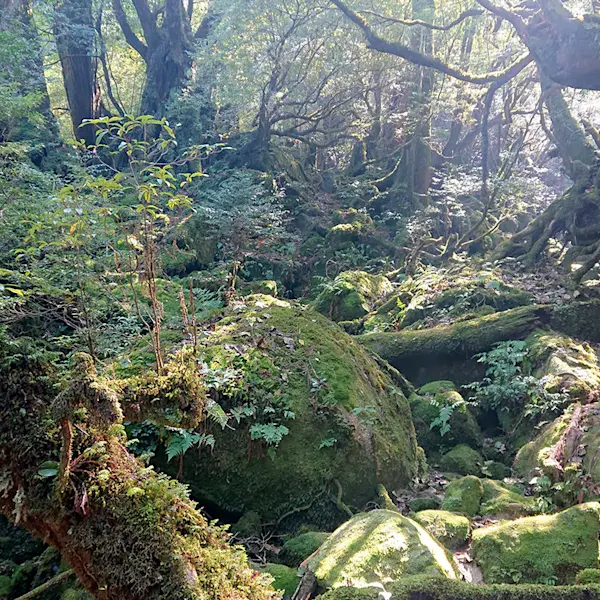 Yakushima: Trekking through Japan’s thousands-year-old forest
Yakushima: Trekking through Japan’s thousands-year-old forest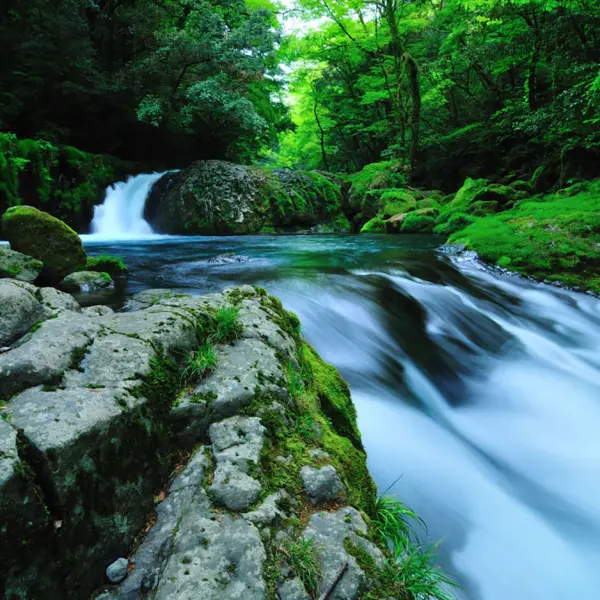 Kikuchi District - The Great Outdoors of Kyushu
Kikuchi District - The Great Outdoors of Kyushu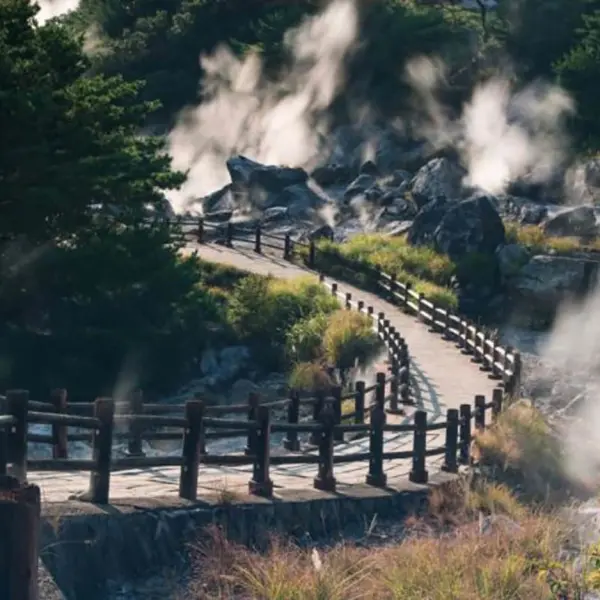 To Hell and Back: Walk Through the Steamy Hot Springs of Unzen
To Hell and Back: Walk Through the Steamy Hot Springs of Unzen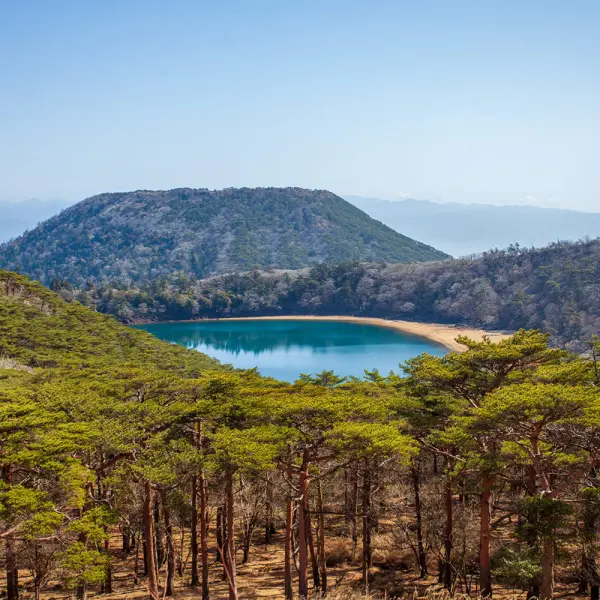 Hiking in Ebino Highlands: Explore the Crater Lakes in the Company of Friendly Deer
Hiking in Ebino Highlands: Explore the Crater Lakes in the Company of Friendly Deer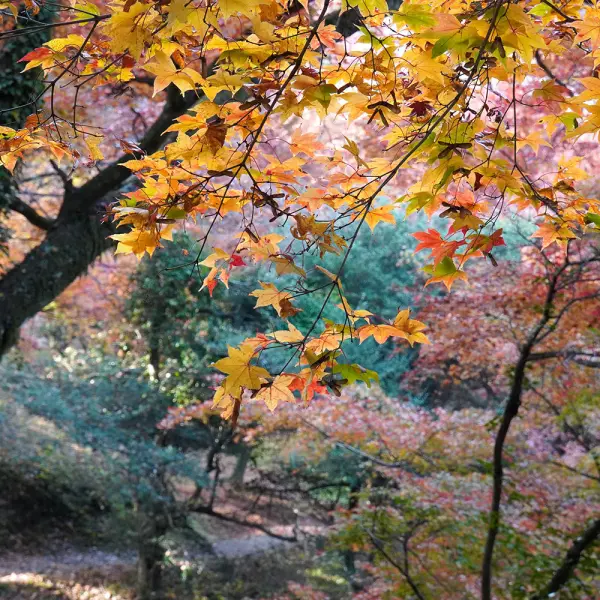 Kyushu Olle: An Autumn Hike on the Okubungo Course
Kyushu Olle: An Autumn Hike on the Okubungo Course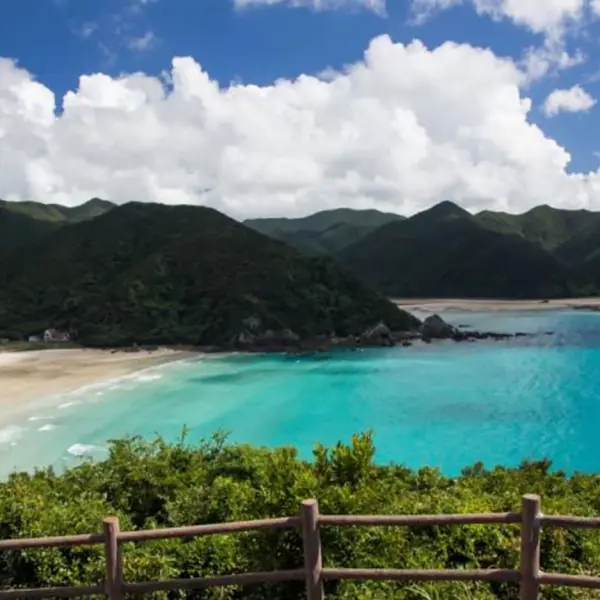 Driving Around Fukue Island: Hidden Churches and Stunning Beaches
Driving Around Fukue Island: Hidden Churches and Stunning Beaches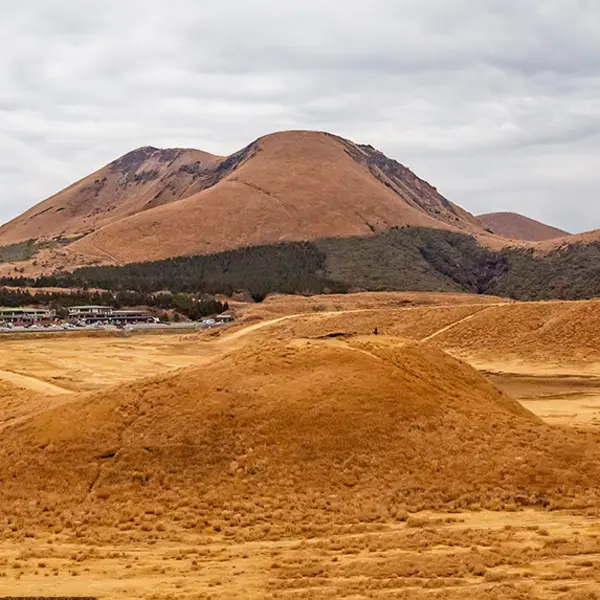 Hiking Trails at Aso Kusasenri
Hiking Trails at Aso Kusasenri Cape Toi in Miyazaki: A Festival of Colors
Cape Toi in Miyazaki: A Festival of Colors




